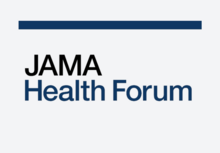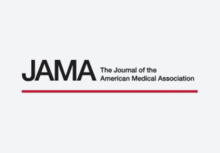Publications
2024
Social determinants of health (SDoH) significantly impacts health outcomes and disparities. While the Centers for Medicare and Medicaid Services has mandated hospitals to collect standardized SDoH data, existing tools lack key elements. This systematic review identified 78 studies and 20 screening tools addressing various SDoH domains. However, most tools were missing several key domains and lacked standardization. We propose a comprehensive tool meeting essential criteria: validated questions, brevity, actionability, cultural appropriateness, workflow integration, and community linkage. Our tool addresses gaps in available tools and incorporates standardized and validated questions to enable patient-centered screening for diverse social and environmental determinants of health. It uniquely includes detailed race/ethnicity data collection, housing characteristics, physical activity assessment, access to healthy food measures, and environmental exposure evaluation. The tool aims to provide actionable data for immediate interventions while informing broader population health strategies and policy initiatives. By offering a holistic assessment of SDoH across multiple domains, our tool enables standardized data collection, risk stratification, and focused initiatives to address health inequities at both individual and population levels. Further research is needed to develop evidence-based pathways for integrating SDoH data into real-world patient care workflows, improve risk prediction algorithms, address health-related social needs, and reduce disparities.
OBJECTIVE: To assess the association between state policies and sociodemographic characteristics and state mean fair share spending at non-profit hospitals. Fair share spending is a hospital's charity care and community investment less the estimated value of their tax-exempt status.
BACKGROUND: Hospitals with non-profit status in the United States are exempt from paying taxes. In return, they are expected to provide community benefits by subsidizing medical care for those who cannot pay and investing in the health and social needs of their community.
METHODS: We used a multivariable linear regression model to determine the association of state-level sociodemographics and policies with state-level mean fair share spending in 2019. Fair share spending data was obtained from the Lown Institute.
RESULTS: We found no association between the percentage of people living in poverty, in rural areas, or U.S. region and fair share spending. Similarly, there was no association found for state minimum community benefit and reporting requirements. The state percentage of racial/ethnic minorities was associated with higher mean fair share spending [+$1.48 million for every 10% increase (95% CI: 0.01 to 2.96 million)]. Medicaid expansion status was associated with a 6.9-million-dollar decrease (95% CI: -10.4 to -3.3 million).
CONCLUSIONS: State-level community benefit policies have been ineffective at raising community benefit spending to levels comparable to the value of non-profit hospital tax-exempt status.
BACKGROUND: High and rising prescription drug costs for asthma and chronic obstructive pulmonary disease (COPD) contribute to medication nonadherence and poor clinical outcomes. The recently enacted Inflation Reduction Act includes provisions that will cap out-of-pocket prescription drug spending at $2,000 per year and expand low-income subsidies. However, little is known about how these provisions will impact out-of-pocket drug spending for Medicare beneficiaries with asthma and COPD.
OBJECTIVE: To estimate the impact of the Inflation Reduction Act's out-of-pocket spending cap and expansion of low-income subsidies on Medicare beneficiaries with obstructive lung disease.
DESIGN: We calculated the number of Medicare beneficiaries ≥ 65 years with asthma and/or COPD and out-of-pocket prescription drug spending > $2,000/year, and then estimated their median annual out-of-pocket savings under the Inflation Reduction Act's spending cap. We then estimated the number of beneficiaries with incomes > 135% and ≤ 150% of the federal poverty level who would become newly eligible for low-income subsidies under this policy.
PARTICIPANTS: Respondents to the 2016-2019 Medical Expenditure Panel Survey (MEPS).
MAIN MEASURES: Annual out-of-pocket prescription drug spending.
KEY RESULTS: An annual estimated 5.2 million Medicare beneficiaries had asthma and/or COPD. Among them, 360,160 (SE ± 38,021) experienced out-of-pocket drug spending > $2,000/year, with median out-of-pocket costs of $3,003/year (IQR $2,360-$3,941). Therefore, median savings under the Inflation Reduction Act's spending cap would be $1,003/year (IQR $360-$1,941), including $738/year and $1,137/year for beneficiaries with asthma and COPD, respectively. Total annual estimated savings would be $504 million (SE ± $42 M). In addition, 232,155 (SE ± 4,624) beneficiaries would newly qualify for low-income subsidies, which will further reduce prescription drug costs.
CONCLUSIONS: The Inflation Reduction Act will have major implications on out-of-pocket prescription drug spending for Medicare beneficiaries with obstructive lung disease resulting in half-a-billion dollars in total out-of-pocket savings per year, which could ultimately have implications on medication adherence and clinical outcomes.
BACKGROUND: Patients who undergo cardiac surgery for drug use-associated infective endocarditis (DUA-IE) have high rates of readmissions for recurrent endocarditis, substance use disorder (SUD), and septicemia. Our primary objective was to assess whether exposure to an addiction consult team (ACT) was associated with reduced readmissions in this population.
METHODS: This single-center retrospective analysis identified patients who underwent cardiac surgery for DUA-IE between 1/2012-9/2022 using the Society for Thoracic Surgeons database, and compared the cumulative incidence of readmissions at 1, 3, 6, and 12 months among those cared for before and after the implementation of an ACT in 9/2017, accounting for competing risk of mortality and adjusted for measured confounders using inverse probability of treatment weighting.
RESULTS: The 58 patients (35 pre-ACT and 23 post-ACT) were young (36.4 +/- 7.7 years) and predominantly White (53.4%) and male (70.7%). The post-ACT cohort had a significantly lower risk of readmission at 1 month (adjusted risk difference [RD] -23.8% [95% CI -94.4%, -8.3%], P = 0.005) and 3 months (RD -34.1% [-55.1%, -13.1%], P = 0.005), but not at 6 or 12 months. In a sensitivity analysis, the post-ACT cohort also had significantly lower risk of readmissions for SUD complications at 3 months.
DISCUSSION AND CONCLUSION: ACT exposure was associated with a lower risk of short-term readmission among patients with surgically managed DUA-IE, possibly due to a reduction in SUD-related complications. Additional studies are needed to replicate these findings and to identify ways to sustain the potential benefits of ACTs over the longer term.




